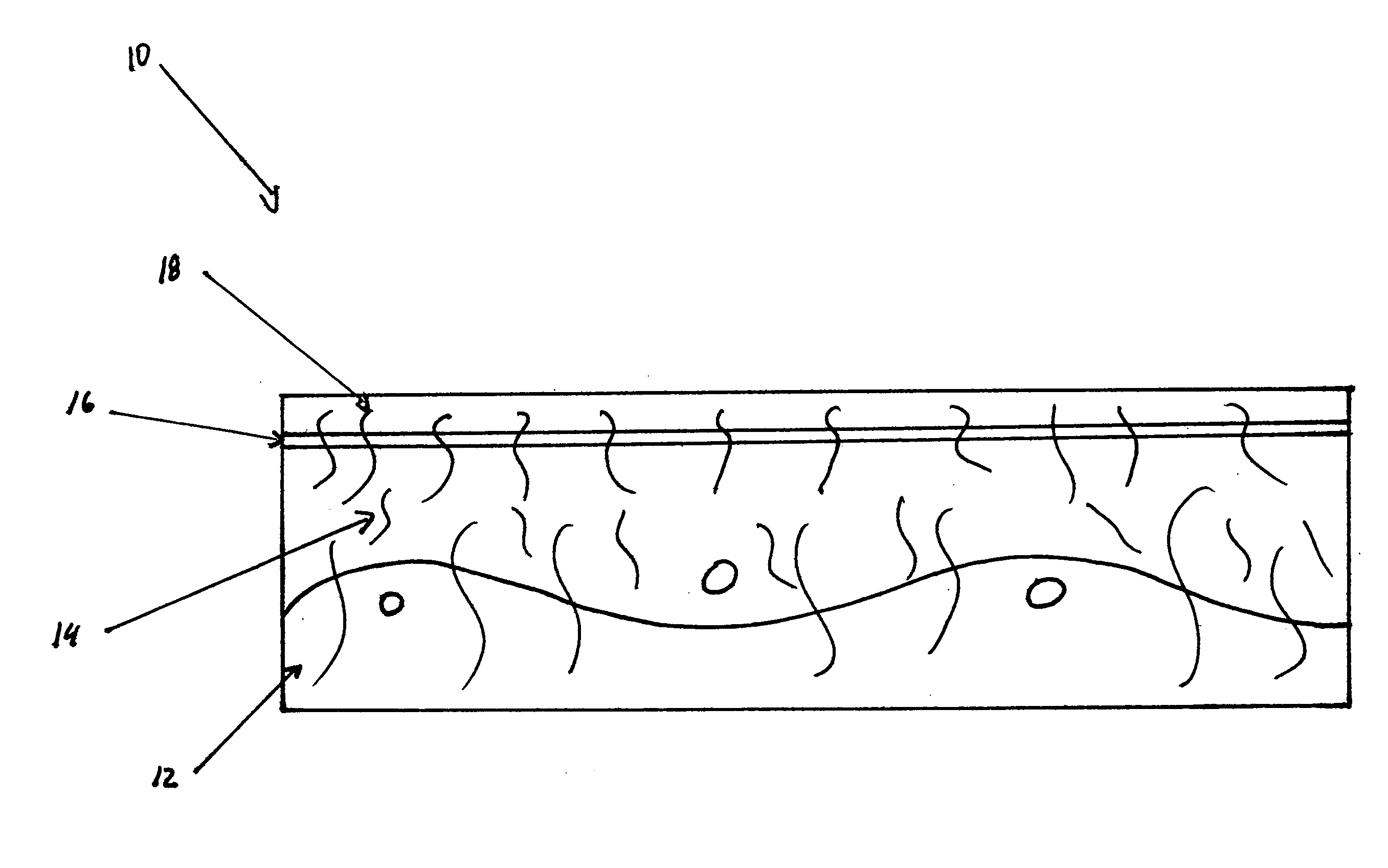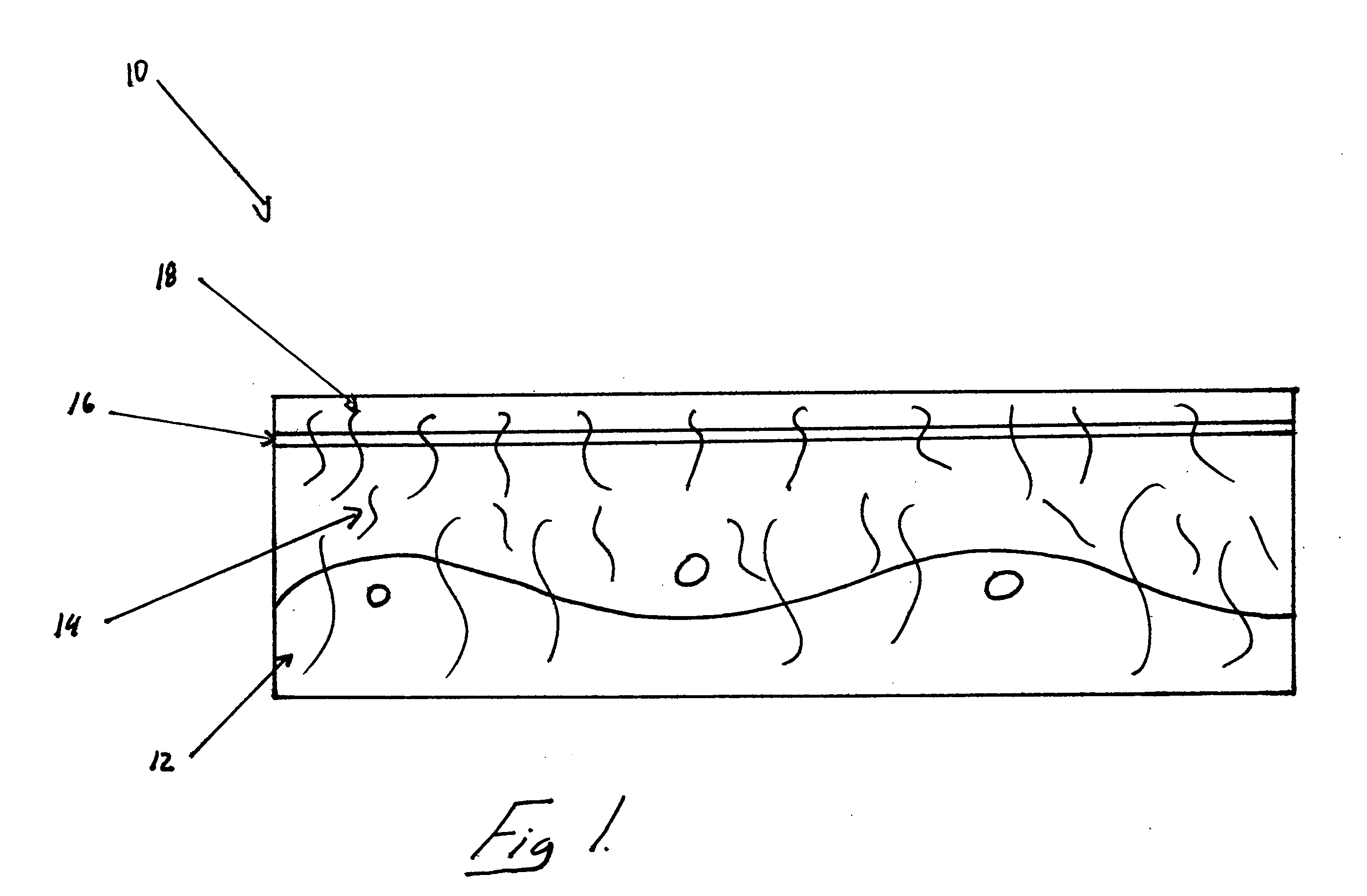Industrial fabric having a layer of a fluoropolymer and method of manufacture
a technology of industrial fabric and fluoropolymer, which is applied in the field of papermaking arts, can solve the problems of clogging the open spaces of fabric, difficult to streamline the manufacturing process, and fabrics are sometimes constructed of multiple layers, so as to improve the degree of control of application, reduce the dimension of the apparatus, and reduce the width of the application
- Summary
- Abstract
- Description
- Claims
- Application Information
AI Technical Summary
Benefits of technology
Problems solved by technology
Method used
Image
Examples
Embodiment Construction
[0039] There are a variety of industrial fabrics for applications ranging from papermaking, hydroentangling, spunbond and meltblowing, to dry filtration and wet filtration. In many applications, the incorporation of a fluoropolymer material into the textile structure has been shown to provide an improved product. For example, fluoropolymers have been incorporated into monofilaments comprised predominantly of polyester. When these fluoropolymers are incorporated at relatively high loadings (10 percent), the resulting fabric is found to have greater resistance to contamination. This anti-soiling characteristic is valuable to the user since a clean fabric equates to a consistent functioning of the fabric. However, there are shortcomings to this approach.
[0040] A first embodiment of the present invention is shown in FIG. 1, and comprises a full base fabric structure 12 or layer that has been produced by conventional techniques which has been needled with batt component 14 using convent...
PUM
| Property | Measurement | Unit |
|---|---|---|
| Length | aaaaa | aaaaa |
| Width | aaaaa | aaaaa |
| Dimension | aaaaa | aaaaa |
Abstract
Description
Claims
Application Information
 Login to View More
Login to View More - R&D
- Intellectual Property
- Life Sciences
- Materials
- Tech Scout
- Unparalleled Data Quality
- Higher Quality Content
- 60% Fewer Hallucinations
Browse by: Latest US Patents, China's latest patents, Technical Efficacy Thesaurus, Application Domain, Technology Topic, Popular Technical Reports.
© 2025 PatSnap. All rights reserved.Legal|Privacy policy|Modern Slavery Act Transparency Statement|Sitemap|About US| Contact US: help@patsnap.com



